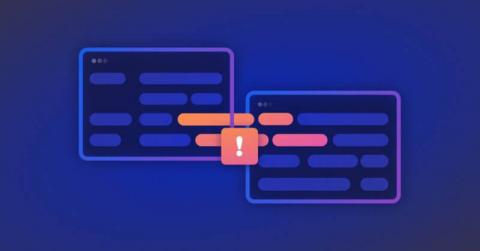Security | Threat Detection | Cyberattacks | DevSecOps | Compliance
DNS
DNS-Based Threats and Their Impact on Business
A Domain Name System (DNS) is a protocol that translates human-readable domain names/URLs—like favoritewebsite.com—into IP addresses that computers can read—like 135.24.56.98. DNS servers handle tens of thousands of queries that transfer minute bits of data between devices, systems, and servers—which makes DNS an attractive and easily exploitable vector for hackers (Cloudns.net).
The SPoF that is DNS
The idea behind “SPoF,” or “Single Point of Failure,” is that if one part of a system fails, then the entire system fails. It’s not desirable. In IT and security circles, if a system or application can be disrupted or degraded severely by the failure of just one component or subcomponent, then we usually deem the design to have a flaw.
Understanding DNS attacks: Identifying and patching vulnerabilities
The Domain Name System (DNS) translates domain names into IP addresses. Every device and website has an IP address that other devices, websites, and online services use to communicate with it. IP addresses are a string of numbers usually formatted as 000.000.000.000. However, we use domain names since people can’t easily remember these numbers.
What DNS over HTTPS (DoH) Is & How to Enable in Windows 10
When your web browser accesses a website, it needs to first translate the friendly URL (such as Netwrix.com) to the public server IP address of the server that hosts that website. This is known as a DNS lookup. Traditional DNS is unencrypted, unlike modern HTTPS web traffic that’s almost entirely secured via HTTPS these days.
LOLBins: executing payloads through DNS records
60 Second Charity Challenge: Domain Shadowing
Cloud DNS Security - How to protect DNS in the Cloud
When using DNS in the Cloud, security cannot be forgotten. This article is for cloud architects and security practitioners who would like to learn more about deployment options to DNS security and security best practices for DNS in the Cloud. You will learn DNS best practices for DNS security, and see the advantages of a cloud approach for DNS. The three main requirements for DNS are: In this article, we begin with DNS basics, then move on to the topic of DNS in the Cloud.
Identify security vulnerabilities with DNS-based threat detection
The Domain Name System (DNS) is responsible for mapping client-facing domain names to their corresponding IP addresses, making it a fundamental element of the internet. DNS-level events provide valuable information about network traffic that can be used to identify malicious activity. For instance, monitoring DNS lookups can help you see whether a host on your network attempted to connect to a site known to contain malware.
How to Secure AWS Route 53 with Sysdig
Either through human error or intentionally, configuration changes in the cloud may suddenly increase your attack surface. AWS Route 53 is an example of a service that needs to be continuously tracked for risky changes. As the first line of defense of our cloud, it is necessary to secure Amazon Route 53 and monitor risky configuration changes to avoid unwanted surprises. As you probably know, AWS Route 53 is of course a very popular DNS service offered by AWS, with millions of top-level domains.











